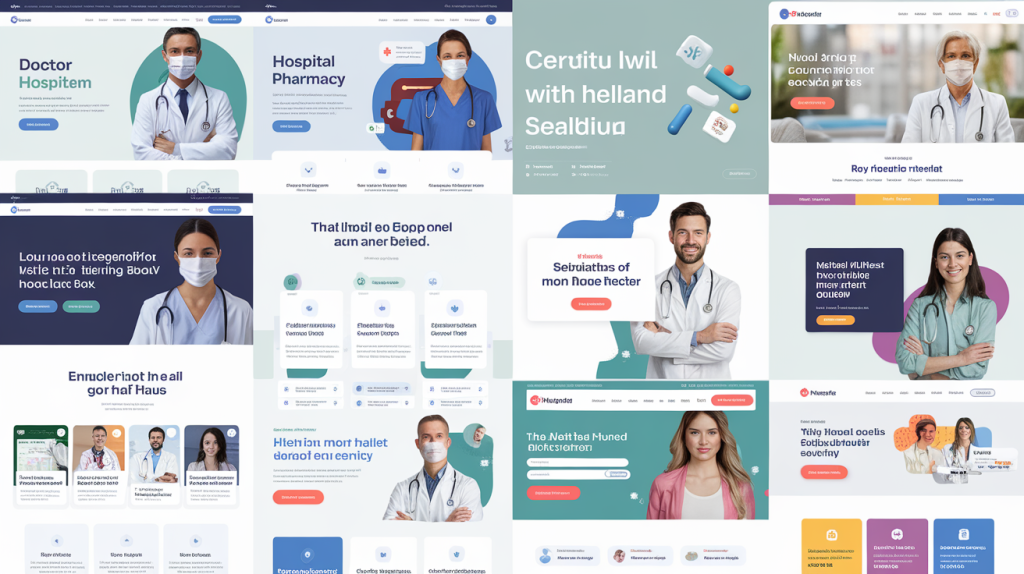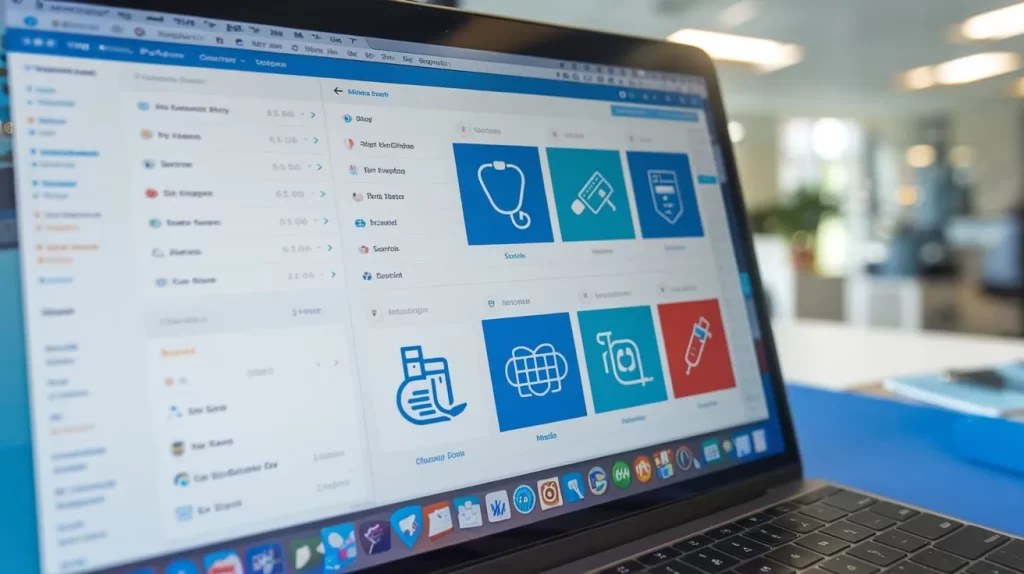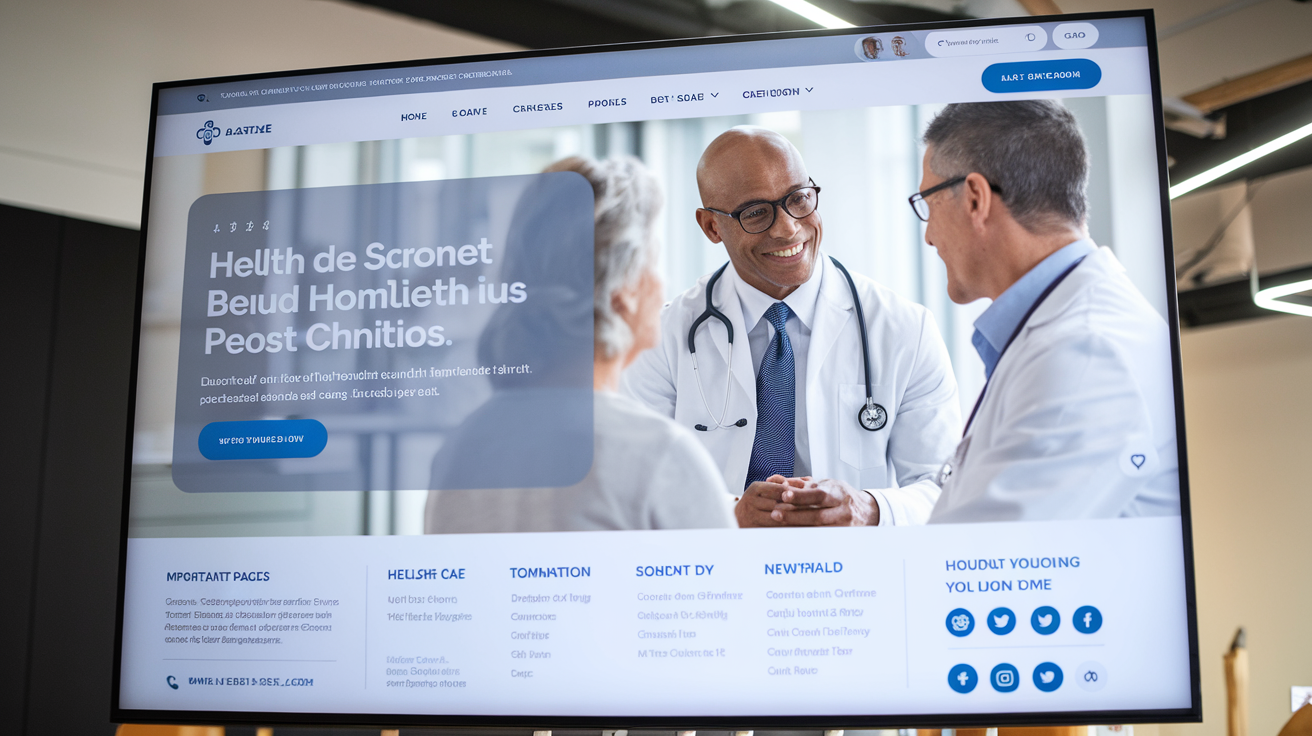Introduction
In today’s digital age, healthcare websites have become indispensable for both healthcare providers and patients. These websites serve as the first point of contact for potential patients, offering valuable information, services, and the opportunity to engage in virtual care. A well-designed, informative, and easy-to-navigate healthcare website can significantly enhance a healthcare provider’s reputation and foster patient trust. We’ll dive deep into the best-performing healthcare websites by category, exploring the most well-designed healthcare websites, most visited health sites, and the high-converting healthcare websites that continue to set the bar for the industry. Each category will highlight the features that make these sites stand out and why they’re successful.
Whether you are building your healthcare website or simply looking for inspiration, this pillar post will help you understand the key elements that make healthcare websites thrive.

Best Designed Healthcare Websites
When it comes to healthcare website design, aesthetics are important, but functionality is crucial. A well-designed healthcare website combines a visually appealing interface with easy navigation, fast load times, and user-centric features. Let’s explore some of the best healthcare website designs that combine beauty with function.
Mayo Clinic – A Masterclass in Healthcare Website Design
Mayo Clinic’s website is consistently ranked as one of the best healthcare websites due to its sleek design and intuitive navigation. The site’s clean, minimalist layout ensures users can easily find the information they need without unnecessary distractions.
Why it stands out:
- Clean, User-Friendly Interface: Mayo Clinic’s website is easy to navigate, ensuring that patients can find information on diseases, treatments, and doctor appointments with ease.
- Accessible for All Users: The website’s design is accessible to users with disabilities, following WCAG (Web Content Accessibility Guidelines) for accessibility.
- Mobile Optimization: The site is mobile-responsive, ensuring users have the same experience on a phone or tablet as they would on a desktop.
Key Design Takeaway: Successful healthcare website designs must balance aesthetic appeal with clear functionality, ensuring that information is accessible and easy to understand for all users.
Cleveland Clinic – A Patient-Centered Approach
Cleveland Clinic is another excellent example of healthcare website design. The site’s design emphasizes the patient experience, offering a simple layout with quick access to healthcare services, educational resources, and tools for patient engagement.
Why it stands out:
- Personalized Content: Cleveland Clinic personalizes the user experience by offering relevant information based on user behavior, preferences, and needs.
- Interactive Features: The site includes features such as virtual health consultations, making it easier for patients to access services remotely.
- Simple Navigation: Clear menu options, a prominent search bar, and a streamlined process for booking appointments set this website apart.
Key Design Takeaway: Personalized user experience, clear navigation, and interactive features are essential for improving engagement and ensuring patients can access the services they need without confusion.
Most Visited Health Websites
Some healthcare websites stand out not just for their design but also for the sheer number of visitors they attract. These sites have mastered the art of content marketing, SEO, and offering value to their users, leading them to rank highly and gain the trust of millions of users.
WebMD – The Giant of Health Information
WebMD is one of the most visited healthcare websites globally. It provides an extensive database of health-related articles, expert opinions, and tools such as symptom checkers and drug databases.
Why it stands out:
- Authoritative Health Content: WebMD offers highly informative articles, medical reviews, and video content created in collaboration with medical professionals and experts.
- Search Engine Optimization (SEO): WebMD’s content is SEO-optimized, ranking highly for a wide variety of medical queries, helping it attract millions of users each month.
- Engagement Tools: The symptom checker and various calculators encourage users to interact with the website, enhancing the user experience.
Key Takeaway: Strong SEO and authoritative, engaging content are essential factors in making a healthcare website one of the most visited. Leveraging medical professionals to create informative, user-friendly content fosters trust.
Healthline – Comprehensive and Trustworthy
Healthline is another giant in the healthcare space. Known for its accurate, well-researched content, Healthline attracts millions of users who turn to the site for trusted health information.
Why it stands out:
- Expert-Curated Content: Healthline collaborates with healthcare professionals to curate and verify content, making it one of the most reliable health information resources online.
- Mobile-Friendly Design: The website is optimized for both desktop and mobile devices, ensuring that users can access its vast content library seamlessly.
- User Engagement: Through its well-structured articles, practical tips, and user-driven content, Healthline maintains high user engagement.
Key Takeaway: The combination of expert-curated content, an optimized mobile experience, and engagement-focused features makes Healthline a go-to for millions of health seekers.

High Converting Healthcare Websites
Conversion in the healthcare space refers to turning website visitors into patients, whether that’s through scheduling an appointment, signing up for a newsletter, or engaging with a health service. High-converting healthcare websites master the art of not just drawing traffic but also guiding visitors through a clear journey that ultimately results in conversions.
Zocdoc – Simplifying Healthcare Appointments
Zocdoc is a healthcare marketplace where patients can book appointments with doctors online. It is widely recognized for its high conversion rates, driven by its simple yet effective website design.
Why it stands out:
- Streamlined Appointment Booking: Zocdoc’s website allows users to book appointments in just a few clicks, offering a seamless experience.
- User Reviews: Patient reviews play a big role in increasing trust and conversion. Potential patients can read real experiences from others to choose the right healthcare professional.
- Clear Calls to Action: The site features clear, action-oriented buttons encouraging users to “Find a Doctor” or “Book an Appointment.”
Key Takeaway: The key to high conversion rates lies in simplifying the user journey, ensuring visitors can quickly and easily take action without unnecessary steps.
Doctor on Demand – Virtual Care Made Simple
Doctor on Demand is a telehealth platform that connects patients with doctors via video chat. The website’s simplicity and ease of use help convert visitors into paying patients.
Why it stands out:
- Virtual Care Focus: As a telehealth provider, Doctor on Demand focuses on making virtual consultations as easy and accessible as possible. Its website allows users to easily book virtual visits with licensed physicians.
- Transparent Pricing: Transparent pricing helps users understand the cost of consultations upfront, making it easier to convert curious visitors into paying patients.
- High-Quality Design: The clean, modern design makes it easy for users to navigate and book virtual consultations in just a few clicks.
Key Takeaway: High-converting healthcare websites excel by offering transparency, simplicity, and an easy-to-navigate platform that prioritizes user needs.
FAQs
What makes a healthcare website high-converting?
A high-converting healthcare website focuses on user experience, providing clear calls to action (CTAs), reducing friction in the user journey, and ensuring that visitors can easily take the next step, whether it’s booking an appointment, subscribing to a newsletter, or accessing a health service.
Why is website design important for healthcare websites?
Healthcare website design is important because it directly impacts user trust, engagement, and experience. A well-designed website improves the chances of visitors staying longer, finding the information they need, and ultimately converting into patients or users of health services.
What are some key features of the most visited healthcare websites?
The most visited healthcare websites typically feature authoritative content, SEO-optimized articles, user-friendly navigation, and interactive tools like symptom checkers or medical calculators. These elements ensure that users can find relevant, reliable information quickly.
Key Takeaways
The best-performing healthcare websites have become benchmarks for success in the industry. Whether it’s Mayo Clinic’s sleek design, WebMD’s authoritative content, or Zocdoc’s streamlined appointment booking, these sites share common traits: high-quality content, user-friendly design, and a focus on patient needs. By examining these categories of best-designed healthcare websites, most visited health sites, and high-converting healthcare websites, we can gain valuable insights into what makes a healthcare website truly stand out.
- Trustworthy, user-friendly design is key to the success of healthcare websites.
- Well-crafted SEO strategies and authoritative content can drive high traffic to health websites.
- High-converting healthcare websites focus on simplicity, transparency, and clear user paths to action.
